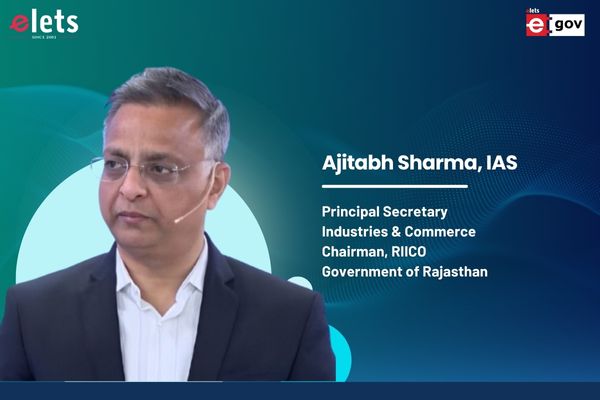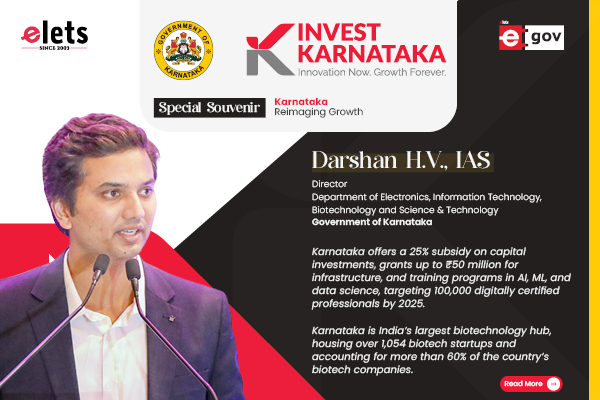How would you like to analyse the contribution of ICT in modernising different sectors of the economy?
India’s focus on growth of the ICT sector has paid rich dividends in terms of export earnings, employment generation, and its image of an emerging economy. Large corporations are becoming competitive by deploying enterprise wide solutions to integrate data and make planning and decision-making data based. A significant proportion of small and medium enterprises have also begun to use computers for maintaining accounts.
The progress on e-Government is uneven. Some of the well administered states in southern and western India have implemented a number of statewide applications whereas in other states there is very little progress. There has been a considerable informatisation of the urban society through expanding telecom services, TV channels and access to Internet. However, the contribution of ICT in modernising the rural economy of India which contributes 20% of the GDP, supports viability of the population is quite marginal.
How e-Governance projects serve the purpose of the community in developing countries, where connectivity is a major problem?
Many e-Government applications demonstrate the efficiency with which services can be delivered to the citizens. e- Government applications have cut the processing time from several days to a few minutes. Cost of bribes, wage loss, and several visits to government offices are minimised. In the absence of high Internet penetration, services are delivered online by operators from service centres located at convenient places.
Publication of budgetary allocations and expenditure on the web, systems for tracking status of applications for a variety of licenses, sharing citizen’s charter and performance data on the web are all known to increase accountability. However, progress on outcomes such as lessening corruption, greater empowerment and e-Democracy has been very slow, even for urban populations.
How would you like to define ‘knowledge society’?
Knowledge society defines a broader role for ICTs as a tool for life long learning for citizens, enabling knowledge workers to improve skills and their capacity to innovate by accessing knowledge via the Internet from the public domain. Individuals have more freedom and greater possibilities for self-realisation. Individuals can be empowered in dealing with the governments and service providers through improved channels of interactive feedback. Communities can be empowered to participate in planning processes through access to information and using the Internet for advocacy of views. Countries develop a comparative advantage that is based on application of knowledge rather than only cheap labour.
What are the main barriers for building ‘knowledge society’? How those can be overcome?
Lack of access to technology is seen to be the biggest barrier. Teledensity in India is mere 10% (cell plus fixed lines) and there are very few high band width connections. There is uneven access across regions, rural and urban population, and a large gap between access to men and women. More than 80percent of all Internet connections are situated a dozen large cities.
In India for centuries, knowledge has been passed on from one generation to the other through written texts, folklore, word-of-mouth, religions and customs. The knowledge, however, remained preserved geographically and hierarchically. Although many experiments have shown that ICT can break such barriers and poor people in rural areas can learn to use computers but the motivation to share knowledge continues to be weak.
There has to be a pro-active, concerted move by the government departments, private sector and allied institutions to share information in an interactive manner. Enactment of freedom of information act is a good first step. The information available on government websites is limited, is of little value and is often redundant. There is an over emphasis on Internet technology to the exclusion of some powerful technologies such as community radios.
The literacy level and skills to use computers and Internet is extremely low. Some interesting experiments like Akshaya in Kerela have shown the way on how to bridge the gap. Same language subtitling of popular entertainment programme on TV has yielded good results in helping to recognise alphabets and words in experiments in India.
Language is one of the major barriers to the access of knowledge. Each day over two million pages are added on the Internet globally but over 85 percent of the content on the net is in English. Moreover, much of the content is not suited to the needs of rural populations in India.
What should be the priority to Knowledge Management (KM) projects?
Access to knowledge can impact effectiveness when individuals feel enriched (with new ideas, solutions to problems) and are able to seek information at the time and place where it is needed. Individuals need to trust the information before the distilled knowledge is applied to a specific action. KM Projects can at best hope to create large electronic networks which will then support the emergence of human networks keen to consult each other and begin to value and trust the information/knowledge that is pooled and disseminated. Knowledge management initiatives should supplement traditional networking through face to face contact, rather than supplant such initiatives.
KM initiatives need to be integrated with the core work of organisations and communities. High profile KM initiatives tend to become dysfunctional. Documentation of indigenous knowledge and sharing it within and across client communities is a potentially powerful idea, but one that is difficult to implement. Projects like Honeybee in India offer another way of capturing indigenous innovations by organising walks of teams of volunteers through clusters of villages to learn about and document rural innovations. The documents are then widely disseminated through print and digital media.
What should be the policy focus for promoting a knowledge society?
Policies need to be designed to encourage competition in the telecom sector. A holistic view needs to be taken of several converging technologies. Since universal service obligation has not worked, other incentives have to be provided for promoting telephony in rural areas. There is some action on enhancing access to Internet in rural areas. Focus needs to shift to development of local content and capacity building.
Policies need to promote appropriate technologies rather than hanker after Internet alone. Community radios, educational TV and wide casting may have a very useful role in building and empowering rural communities. When rural women learnt to video tape the poor progress of rural projects in Kenya and showed the clips to decision makers in far away cities, the response was quick and positive.
Promulgation of freedom of information act is a step in the right direction. However, civil servants should not be allowed to curtail its effectiveness.
e-Government should be promoted as it can advance the agenda on governance and fiscal reform, transparency, anti-corruption, empowerment and poverty reduction.
Do you think that public-private partnership may play a major role in promoting the knowledge society through effective policy implementation?
Public-private partnership is likely to play a very important role. Entrepreneurship is needed to create a demand for knowledge and information amongst the rural population. Creation of a large number of access points for electronic services requires large investments, managerial competence and innovation. Private partners can bring the necessary funds and innovative energy to create the infrastructure and keep it viable over time. The mind set within government agencies needs to change to encourage partnership by structuring agreements that provide for a fair return on investments by the private partner but any profiteering can be regulated.
What role the NGOs and grassroots organisations should play in knowledge creation and diffusion?
The rural populace lacks the life skills required to filter through the vast information available on the Internet and identify information most relevant to them. The role of intermediaries in interpreting the information needs of rural communities, collecting the information from public domain sources and dissemination of the information in local text and idiom is very important, as has been demonstrated in pilots in Kothamale and in Pondicherry.
Making content appropriate to local communities will require a decentralised approach to content development. Some of the existing institutions that serve rural clientele such as extension workers, dairy, leather, and handloom cooperatives can play a significant role in developing content, provided that Internet is ubiquitous enough to deliver this content to rural populations.
For making governments accountable, experience in developed countries has shown that merely creating a good website/ on-line portal does not guarantee its use by the citizens. Conscious efforts are required to drive citizens to the portal through advertising campaigns and education. Intermediaries that can analyse such information, and highlight exceptional conditions which deserve citizen’s attention are needed.
As an alert watchdog, traditional media needs to highlight such information and generate wide spread debate around significant issues of public concern. The web is a new medium for the traditional media reporters. Through workshops and seminars they need to be made aware of the detailed information made available on the web.
ICT policy in Malaysia
Malaysia being a middle-income economy is able to shift from agrarian society to industrial society in a single generation (during 60s to 80s). ICT have played a dual role the development of Malaysia, one is product sector and another one is as strategic enabler. Malaysia took two major initiatives to address both the issues of economic competitiveness and social equality, such as – Multimedia Super Corridor (MSC) targeting economic development and National Information Technology Agenda (NITA) targeting social development. In 1996 National Information Technology Council (NITC was formed in 1994) came out with National IT agenda, which a people centered approach to development. ITA was operationalised with five e-Trusts model. They are e-Economy, e-Public services, e-Community, e-Learning and e-Sovereignty. To develop the nation from the industrial society to developed society, Malaysia has a plan called Vision 2020, three phase migration strategy is planned to attain goals of vision 2020.

Be a part of Elets Collaborative Initiatives. Join Us for Upcoming Events and explore business opportunities. Like us on Facebook , connect with us on LinkedIn and follow us on Twitter, Instagram.
"Exciting news! Elets technomedia is now on WhatsApp Channels Subscribe today by clicking the link and stay updated with the latest insights!" Click here!














